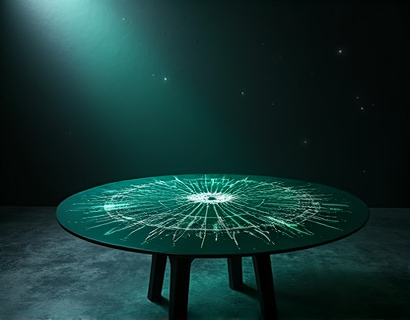Uncovering the Mysteries of the Indus Valley Civilization
The Indus Valley Civilization, one of the oldest and most advanced ancient cultures, flourished around 3300 to 1300 BCE in the northwestern regions of South Asia. Spanning across present-day Pakistan and northwestern India, this civilization is renowned for its sophisticated urban planning, advanced water management systems, and unique artistic expressions. For history enthusiasts and cultural scholars, delving into the Indus Valley Civilization offers a profound connection to one of the world's earliest urban societies.
The civilization's name originates from the Indus River, which played a crucial role in the development and sustenance of the cities. The most prominent urban centers of this civilization were Harappa and Mohenjo-Daro, though numerous other settlements have been discovered. These cities were built with a high degree of standardization, featuring well-planned streets, advanced drainage systems, and public baths, indicating a society with a strong emphasis on hygiene and urban sophistication.
Urban Planning and Architecture
The urban planning of Indus Valley cities is a testament to the advanced engineering skills of its people. Mohenjo-Daro, one of the most extensively excavated sites, showcases a grid-like street layout with streets running north-south and east-west. The city was divided into two main areas: the Citadel and the Lower Town. The Citadel, elevated on a platform, likely served administrative and religious purposes, while the Lower Town contained residential and commercial areas.
The buildings in Mohenjo-Daro were constructed using standardized bricks, ensuring uniformity and durability. Houses had multiple stories, with some featuring rooftop terraces and intricate drainage systems. The Great Bath, a significant structure in the Citadel, is an impressive example of the civilization's architectural prowess. This large, rectangular tank, surrounded by steps and possibly used for ritual purification, demonstrates the importance of water in their culture.
Water Management and Sanitation
The Indus Valley Civilization's advanced water management systems were ahead of their time. Each house had access to a private bathroom, connected to a sophisticated drainage network. The streets were paved and had a central gutter for drainage, which helped maintain cleanliness in the urban environment. The presence of wells and cisterns further indicates a well-organized system for water collection and storage.
One of the most remarkable features is the public baths, such as the Great Bath mentioned earlier. These structures were not only functional but also served as social and religious centers. The use of standardized bricks and precise construction techniques suggests a high level of organizational skill and a strong central authority.
Art and Craftsmanship
The Indus Valley Civilization is celebrated for its unique and intricate art and craftsmanship. Small figurines, often made of clay or steatite, depict a variety of subjects including animals, humans, and deities. The famous "Dancing Girl" and "Priest-King" figurines are prime examples of the civilization's artistic talent. These small, detailed sculptures provide insights into the daily life, religious practices, and social structure of the people.
Jewelry and personal adornments were also prevalent, with beads made from materials such as carnelian, lapis lazuli, and shell. The craftsmanship of these beads, often drilled and polished to a high finish, showcases the skill and attention to detail of Indus artisans. Seals and amulets, often inscribed with mysterious script, were used for trade and possibly religious purposes.
Trade and Economy
The Indus Valley Civilization had extensive trade networks that extended beyond its borders. Archaeological evidence suggests trade with Mesopotamia, as indicated by the discovery of Indus seals in Mesopotamian sites and Mesopotamian goods in Indus sites. The civilization's ports, such as those at Lothal and Sutkagen Doppler, facilitated maritime trade, allowing for the exchange of goods like cotton textiles, spices, and precious stones.
Agriculture was the backbone of the economy, with crops such as wheat, barley, and cotton being cultivated. The presence of granaries and storage facilities indicates a well-organized system for managing agricultural produce. The use of standardized weights and measures further supports the existence of a complex trade and economic system.
Decline and Legacy
The decline of the Indus Valley Civilization remains a subject of debate among scholars. Factors such as climate change, environmental degradation, and possible invasions have been proposed. However, the civilization's legacy continues to influence modern South Asian cultures. The urban planning, water management techniques, and artistic traditions of the Indus Valley have left an indelible mark on the region's history.
Today, the Indus Valley Civilization is recognized as one of the cradles of civilization, alongside Mesopotamia and Egypt. Its rediscovery in the 19th century has sparked a renewed interest in understanding this enigmatic culture. Ongoing archaeological excavations and research continue to uncover new insights, keeping the spirit of this ancient civilization alive.
Exploring the Indus Valley Through Exclusive Artifacts
For those eager to delve deeper into the Indus Valley Civilization, exploring exclusive artifacts offers a unique and enriching experience. These artifacts, carefully curated and presented, provide a tangible connection to the daily lives, beliefs, and achievements of the people who lived in this ancient society.
One such artifact is the terracotta figurines, which offer a glimpse into the religious and cultural practices of the Indus people. These figurines, often depicting deities or ritual scenes, were likely used in household shrines or as offerings. The level of detail and craftsmanship in these figurines highlights the importance of religion and art in Indus society.
Seals, another significant artifact, were used for marking goods and documents. Many seals feature intricate designs and inscriptions in the Indus script, which remains undeciphered. These seals not only served practical purposes but also reflect the civilization's advanced writing system and artistic sensibilities.
Jewelry and personal adornments, such as beads and pendants, provide insights into the social status and fashion of Indus individuals. The use of various materials and the intricate designs of these items indicate a sophisticated understanding of aesthetics and craftsmanship. These artifacts not only serve as decorative pieces but also as valuable historical documents.
Connecting with the Past Through Educational Resources
To complement the exploration of artifacts, educational resources play a crucial role in deepening the understanding of the Indus Valley Civilization. Detailed articles, academic papers, and documentaries offer comprehensive insights into the various aspects of this ancient culture. Museums and online platforms dedicated to the Indus Valley provide virtual tours and interactive exhibits, allowing enthusiasts and scholars to explore the civilization in a dynamic and engaging way.
Books and scholarly publications by experts in the field offer in-depth analyses and theories about the civilization's rise, peak, and decline. These resources are invaluable for those seeking a deeper understanding of the Indus Valley's social, economic, and cultural dimensions. Additionally, conferences and seminars hosted by universities and cultural institutions provide opportunities for experts to share their latest findings and engage with a broader audience.
Honoring the Indus Valley Through Unique Merchandise
While exploring the Indus Valley Civilization, unique merchandise can serve as a meaningful way to honor and celebrate this ancient culture. Art prints featuring detailed reconstructions of Indus cities, replicas of artifacts, and books on the civilization's history and significance make excellent gifts for enthusiasts and scholars.
Custom-designed jewelry inspired by Indus artifacts, such as beads and pendants, allows individuals to wear a piece of history. These items not only add a touch of elegance but also serve as conversation starters, sparking interest and curiosity about the Indus Valley Civilization. By supporting the creation and distribution of such merchandise, we contribute to the preservation and promotion of this fascinating ancient culture.
In conclusion, the Indus Valley Civilization remains a captivating subject for history enthusiasts and cultural scholars. Through the exploration of its urban planning, water management, art, trade, and legacy, we gain a deeper appreciation of one of the world's earliest urban societies. By engaging with exclusive artifacts and educational resources, we can continue to uncover and honor the rich heritage of this enigmatic civilization.










































